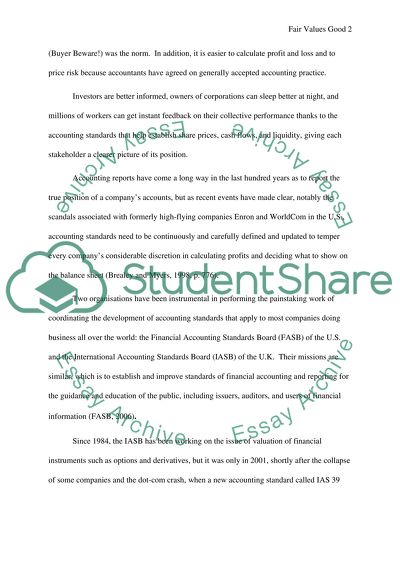Cite this document
(Fair Values Good, Historical Costs Bad Essay Example | Topics and Well Written Essays - 1500 words, n.d.)
Fair Values Good, Historical Costs Bad Essay Example | Topics and Well Written Essays - 1500 words. https://studentshare.org/finance-accounting/1538594-fair-values-good-historical-costs-bad-after-orwell-animal-farm-discuss
Fair Values Good, Historical Costs Bad Essay Example | Topics and Well Written Essays - 1500 words. https://studentshare.org/finance-accounting/1538594-fair-values-good-historical-costs-bad-after-orwell-animal-farm-discuss
(Fair Values Good, Historical Costs Bad Essay Example | Topics and Well Written Essays - 1500 Words)
Fair Values Good, Historical Costs Bad Essay Example | Topics and Well Written Essays - 1500 Words. https://studentshare.org/finance-accounting/1538594-fair-values-good-historical-costs-bad-after-orwell-animal-farm-discuss.
Fair Values Good, Historical Costs Bad Essay Example | Topics and Well Written Essays - 1500 Words. https://studentshare.org/finance-accounting/1538594-fair-values-good-historical-costs-bad-after-orwell-animal-farm-discuss.
“Fair Values Good, Historical Costs Bad Essay Example | Topics and Well Written Essays - 1500 Words”. https://studentshare.org/finance-accounting/1538594-fair-values-good-historical-costs-bad-after-orwell-animal-farm-discuss.


